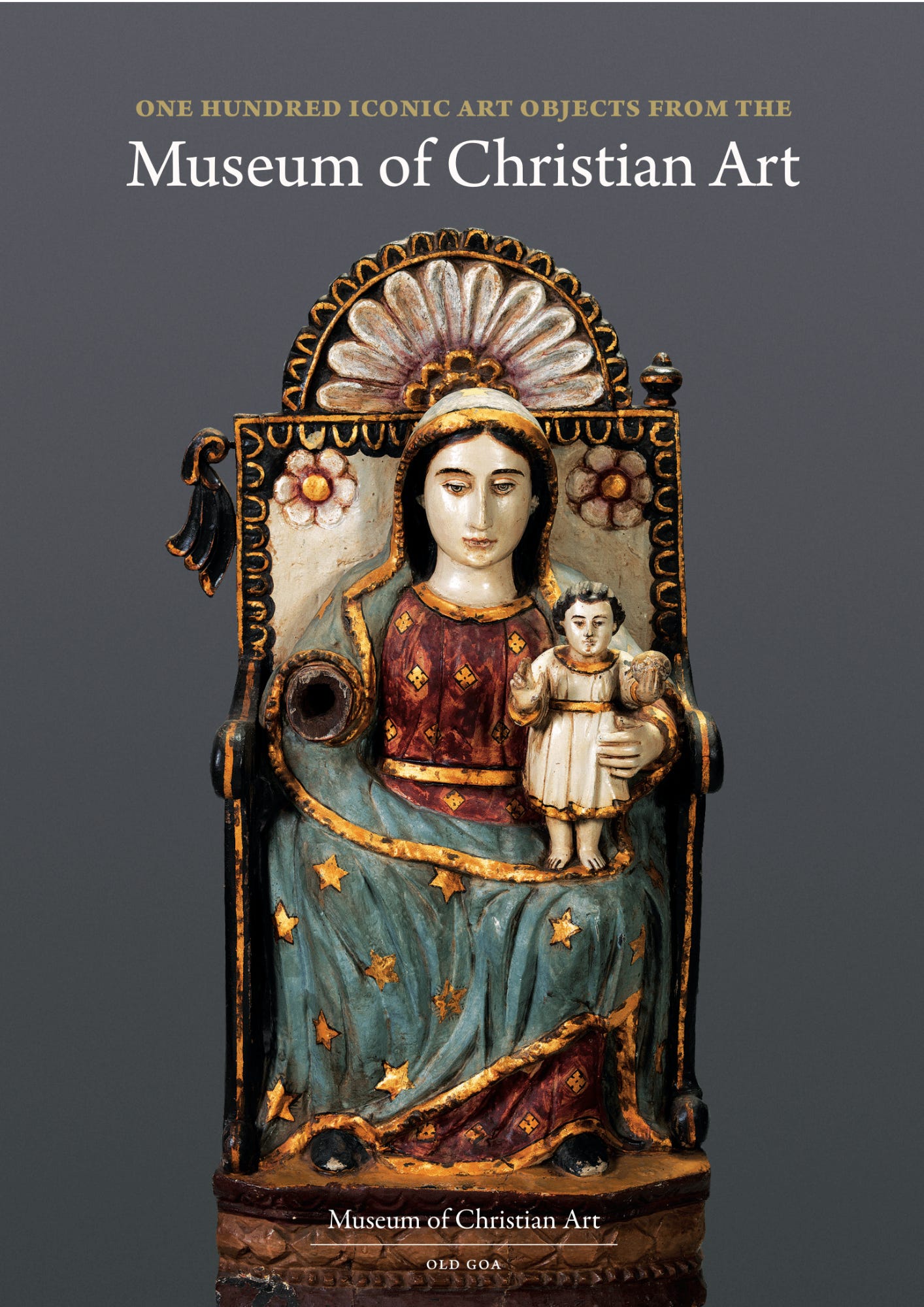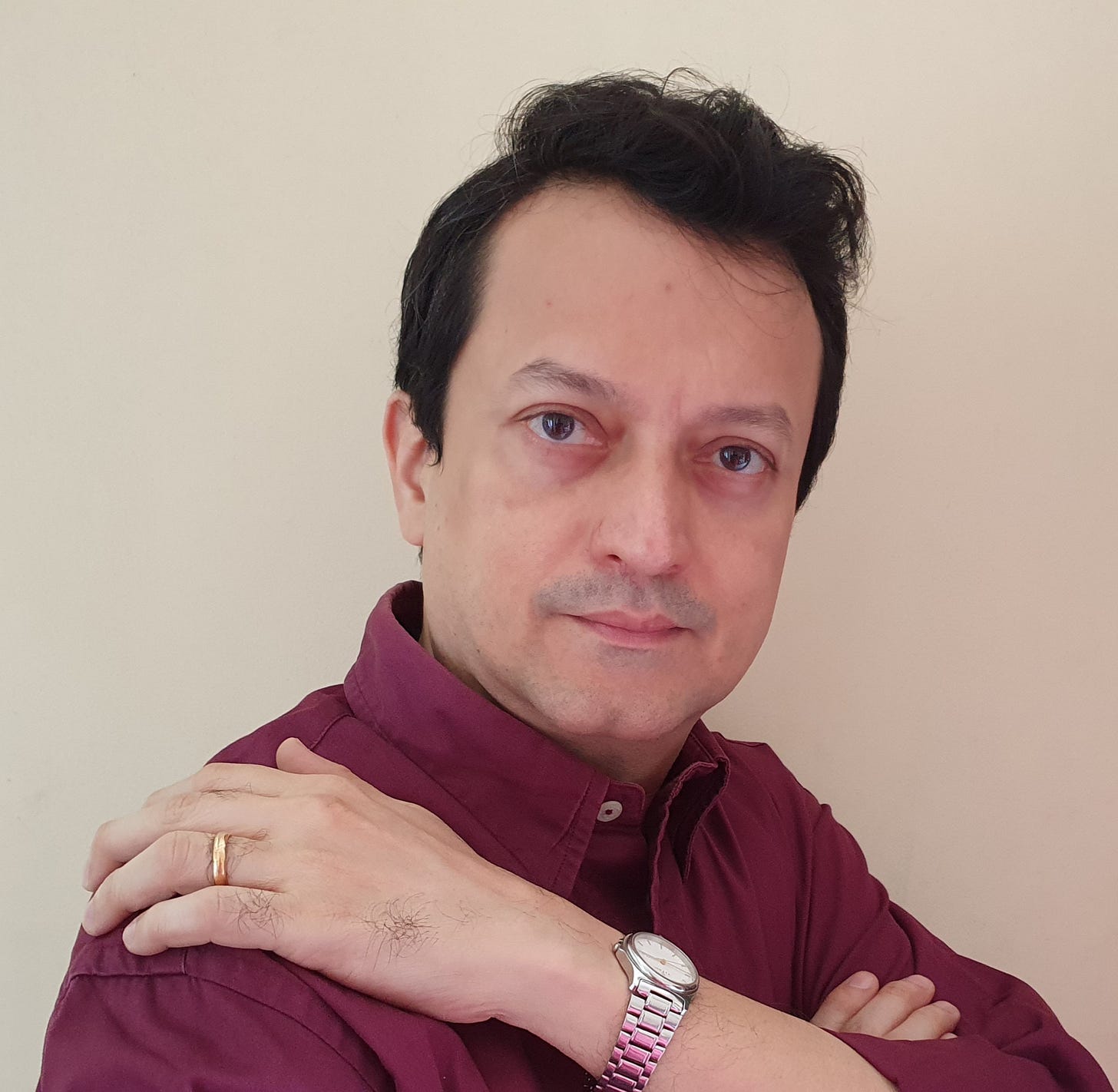Hola Global Jigsaw community,
This week we’re lucky to have a guest post by Ranjit Hoskote, a poet, cultural theorist, translator and curator. Hoskote is an all-round literary Renaissance man – cosmopolitan, yet rooted – terrifically erudite and a very nice person. In short: he embodies a lot of what the Global Jigsaw would like to see more of in the world.
His post focuses on some of the of images of the Virgin Mary at the collection of the Museum of Christian Art (MoCA) at the Convent of Santa Monica, in Goa. Goa, an Indian state on the western coast of the country, was under Portuguese rule until 1961. It epitomizes cultural mélange in myriad ways.
Hoskote looks at how the worship of the Mother Goddess links Goa’s Hindu and Christian cultures, describing practices of syncretic worship wherein the two religious cultures present “alternative yet overlapping versions of a transcendent reality, neither version excluding or cancelling the other one out.”
Photo credit: Antonio Cunha under the commission of the Calouste Gulbenkian Foundation
The Catholic church’s veneration of idols of Mary has opened it up on occasion to criticism from Protestants. But in India, it was Mary’s easy conflation with Devi (Mother Goddess) worship that allowed newly converted Indians to Catholicism from diverse groups within the Hindu fold, a “profound psychic consonance and continuity with their worship of the Devi, in her various forms ...”
The Marian images at MoCA, Hoskote says, are testimony to the “dynamic processes of confluence – comprising importation and absorption, apprenticeship and experimentation, influence and dialogue – by which a Catholic iconography, introduced by Portugal’s colonial empire in the 15th century AD, became an integral part of the popular culture and artistic imagination of the Estado da India.”
I hope you enjoy his piece. If you do, please share it:
And, if possible do subscribe to The Global Jigsaw:
***
The proper technical term for the veneration of Mary, in the Catholic Church, is hyperdulia. It signifies a level higher than dulia – the veneration of saints – but lower than latria, a degree of adoration that is reserved for the Holy Trinity. Mary is the only personage who can receive hyperdulia. This subtle refinement of gradations of reverence enshrines the strategic response of the Catholic Church to the charge, levelled against it by several Protestant schools of thought, of ‘Mariolatry’, the idolatrous worship of Mary.
Whatever the official theological position, the proliferation and vital centrality of Marian images in the Estado da India tells a somewhat different story. Here, it is explicitly clear that the veneration of Mary was, for Indians newly converted to Catholicism from multifarious caste groups and sects within the Hindu fold, in profound psychic consonance and continuity with their worship of the Devi, the Mother Goddess, in her various forms – among them Durga, Parvati, Lakshmi, Saraswati, and Mahakali.
In Goa, notably, the worship of the Mother Goddess is deeply embedded in the indigenous belief system at all levels of the social formation. As Santeri, one of the seven sisters of the Saptamatrika (‘Seven Little Mothers’) cult, she is a guardian figure, “signifying her special attributes of peace, fertility and protection which Goa is proud to give as its special contribution to the Indian tradition”, as the scholar Maria Aurora Couto writes.
Santeri continues to be worshipped in aniconic form, as a consecrated anthill, in Goa’s robust folk religious traditions; meanwhile, she has also been absorbed into the religious system of the Saraswat Brahmins, northern immigrants who settled in Goa, as the iconic Shantadurga, the consort of Shiva in his aspect of Mangesh or Mahangirisha. It comes as no surprise that these religious archetypes informed the response of new Goan converts, in the 16th and 17th centuries, to the Virgin Mary.
Indeed, the worship of the mother goddess forms a confluential link between Goa’s Hindu and Christian cultures. This is perhaps best represented by the annual Feast of Mary as Our Lady of Miracles, known in Konkani as ‘Milagres Saibin’, which is usually celebrated in the third week of Easter at the Church of St Jerome, built in 1594 near the ruins of a famous Santeri temple, in Mapusa.
Milagres Saibin is popularly regarded as an avatar of Meerabai, one of Santeri’s six sisters: she testifies to the active persistence, in the ongoing sacred everydayness of ritual experience, of the ancient Saptamatrika worship that is integral to the deepest stratum of religious consciousness in India. “Both Hindus and Catholics assemble in large numbers to venerate the Saibin and offer oil and candles to her. Similar festivals of both Catholics and Hindus are held in churches for Santeri-Saibin in several villages in Goa. The union of worship despite separate faiths is a factor that accounts for communal peace and harmony in Goa,” writes Couto.
Participating together in these ceremonies with fervour, Goa’s Hindus and Christians are united by a Mother Goddess whom they approach as alternative yet overlapping versions of a transcendent reality, neither version excluding or cancelling the other one out. ‘Saibin’, meaning ‘Lady’, is the feminine form of Saib’, the Konkani adaptation of the Arabic word Sahib, meaning ‘Lord’: this etymology speaks of yet another confluence of cultures through the centuries-long trade circulations of the Indian Ocean, by which Goa was connected to the Arabian peninsula and the East African seaboard.
Festivals like the Feast of Milagres Saibin demonstrate both the resilience of local forms of religious experience and the well-attested human tendency towards syncretism and synthesis, despite theological or ideological divergences. In Goa, in particular, such articulations of confluence register a historic defiance of the oppressive measures adopted by the Inquisition, which held sway in the Estado da India from 1560 to 1820, with a brief interval, 1774 to 1778, when it was temporarily suppressed. Under the Inquisition, Christian converts were obliged to renounce all the customs and practices that bound them to their matrix culture, including forms of sumptuary costume, dietary and linguistic choices, and preferences of floral offering.
Despite these strict measures of prescription and proscription, significant elements of Hindu culture have found their way into Christian iconography and forms of worship, generating an idiom of cultural improvisation and innovation that is irreducible to one or another of the parent cultures. Terms such as ‘Indo-Portuguese’ or ‘Indo-Lusitanian’ gesture towards this idiom, but – in suggesting a simple and mechanical blending of binaries – fall short of conveying its rich, unpredictable complexity.
I conclude this essay with a brief reflection on a singularly exquisite 20th-century ivory sculpture, Nirmala Matha (‘Mother of Purity’), a gift made to the museum by Father Joaquim Loiola Pereira of Benaulim (Inv. no. 09.1.1). The donor did not know its provenance; in a manner suggestive of the miraculous, he found it one day in his room at the Jnana-Deepa Vidyapeeth, the Pontifical seminary in Pune, with nothing to indicate how it had been placed there or by whom.
Nirmala Matha. Photo credit: Antonio Cunha under the commission of the Calouste Gulbenkian Foundation
This miniature sculpture marks the furthest move away from European exemplars in the Marian iconography of the Estado da India. Here, the Madonna is practically indistinguishable from a Devi. Her disposition is that of the Immaculate Conception: she stands with her hands folded, and there is a crescent moon at her feet. But, for the rest, she would not be out of place in a Hindu shrine: she stands on a lotus base and is dressed in a sari; her crown is a kirita or mukuta in the Indian manner.
Her head is surrounded both by an aureole or nimbus, and also by an elegantly ornamented prabhavali or frame of glory – at the apex of which, directly above the Madonna/Devi’s head, appears the Paraclete in the form of a dove. This icon communicates, with special and resonant intensity, the coming together of two traditions and belief systems – and the transcendence of their differences – in a symbol of infinite grace.
Supplicants and observers more habituated to European conceptions of the Madonna may well be surprised by the seemingly complete inculturation displayed by this image. And yet, was Nirmala Matha not already prefigured in a poem of extraordinary grandeur, composed in a mixture of Marathi and Konkani by an English-born Jesuit at Rachol in the late 16th century?
Father Thomas Stephens wrote his Krista Purana as a sprawling two-part narrative in the style of the puranas, large-scale narratives enumerating and extolling the deeds of the Hindu deities. It comprises 11,018 lines set in the ovi quatrains associated with the devotional poetry of many of Western India’s Bhakti saints.
The Krista Purana reverberates with its author’s passion for translating the story of Jesus Christ into the local languages of the Estado da India. Equally, it reverberates with his passion for conveying into the Biblical stories, culled from the Old Testament and the New, the flora and fauna, the sights and scents, the culture and ecology of Goa, which Stephens adopted as his homeland.7
Stephens (Wiltshire, 1549–Salcete, 1619) was a votary of the Jesuit policy of accommodatio, openness to local custom in the service of the faith, a prototype of what would later be termed inculturation. He was a key protagonist in the histories of transcultural passage and confluential encounter that should act as our talismans against the afflictions of parochialism and xenophobia.
In the Krista Purana, Stephens invented a vast vocabulary of Konkani–Marathi terms for the key figures who dominate the Old and the New Testament, such as Devabapa for God the Father; Devasuta for God the Son; Isphari Santa for the Holy Spirit. For Mary, he invented more than eighty Konkani–Marathi and Sanskrit names and titles resonant with honorific praise and devotional ardour: among them, Devamata (Mother of God), Bhagyevanta Mari (Blessed Mary), Sadaivi Ankuvari (Eternal Virgin), Sadaivi Bhagevati Striyamaji (Eternally Blessed among Women), and Svargichi Rani (Queen of Heaven), Chandrabimba Sundari (Beautiful as the Moon), Surya Nirmala (Spotless as the Sun), and Pavitra Mata (Holy Mother).
This beatific jewel in the museum’s collection of Marian images, Nirmala Matha, is the realization of Stephens’ vision of a Christianity that would be fully and abidingly at home in India, in word, image, thought, and spirit.
*****
Ranjit Hoskote
Hope you enjoyed this exploration of Goan religious iconography. Do let me know in the comments section.
Until next time,
Pallavi







a transcendent piece!